Ditapis dengan
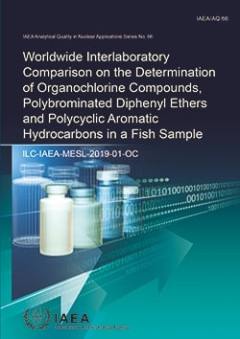
Worldwide Interlaboratory Comparison on the Determination of Organochlorine C…
The marine environment, as a global sink of persistent chemical mixtures, needs to be regularly monitored to assess the status of pollution and its impact on different marine compartments. Policy makers need access to reliable, accurate and comparable analytical data to enable sound management of the marine environment. Among the goals of the IAEA Marine Environmental Laboratories is to assi…
- Edisi
- -
- ISBN/ISSN
- 2074–7659
- Deskripsi Fisik
- 204 P
- Judul Seri
- IAEA Analytical Quality in Nuclear Applications Series No. 66
- No. Panggil
- 621.48 IAE w
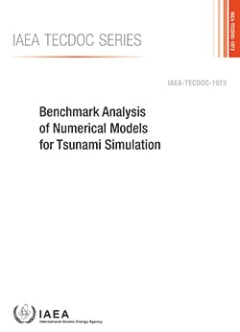
Benchmark Analysis of Numerical Models for Tsunami Simulation: IAEA TECDOC No…
The 2004 Indian Ocean tsunami damaged the Madras Atomic Power Station in India and led to a new understanding of the importance of flooding hazards caused by tsunamis at nuclear power plant sites. The Great East Japan Earthquake and subsequent tsunami in 2011, which heavily damaged the Fukushima Daiichi nuclear power plant, re-emphasized the importance of tsunami hazard assessments. Recognizing…
- Edisi
- -
- ISBN/ISSN
- 978-92-0-128321-4
- Deskripsi Fisik
- 146 p
- Judul Seri
- IAEA TECDOC series
- No. Panggil
- 551.4637 IAE b
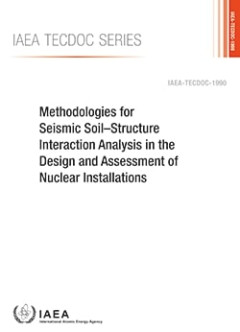
Methodologies for Seismic Soil–Structure Interaction Analysis in the Design…
The response of a nuclear installation’s structure during an earthquake depends on the characteristics of the ground motion, the surrounding soil and the structure itself. Soil– structure interaction (SSI) analysis is used to evaluate the effects of seismic ground motion on an installation’s structure, system and components, to ensure it is designed to withstand the effects of earthquakes…
- Edisi
- -
- ISBN/ISSN
- 978-92-0-143121-9
- Deskripsi Fisik
- 194 p
- Judul Seri
- IAEA TECDOC
- No. Panggil
- 621.039.58 IAE m
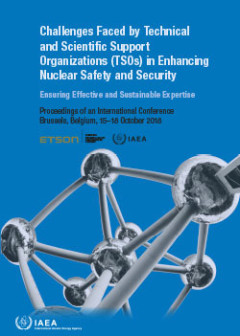
Challenges Faced by Technical and Scientific Support Organizations (TSOs) in …
The global nuclear safety and security framework (GNSSF) provides a conceptual structure and guidelines for achieving and maintaining a high level of safety and security at nuclear facilities and in nuclear related activities around the world. Technical and scientific support organizations (TSOs) play an essential role in sustaining the GNSSF by providing assistance to regulatory bodies in esta…
- Edisi
- -
- ISBN/ISSN
- 978-92-0-121021-0
- Deskripsi Fisik
- 258 p
- Judul Seri
- Proceedings Series - International Atomic Energy Agency
- No. Panggil
- 621.039.58 IAE c
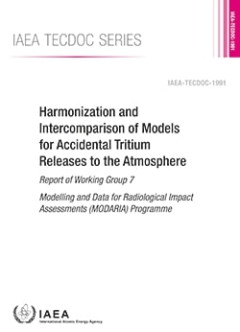
Harmonization and Intercomparison of Models for Accidental Tritium Releases t…
Models are essential tools in evaluating radiological impacts within the safety assessment process and regulatory control of facilities as well as of activities in planned exposure situations, existing exposure situations and emergency exposure situations. Modelling the transfer of radionuclides in the environment and assessing the resulting radiation exposure of people and the environment is n…
- Edisi
- -
- ISBN/ISSN
- 978-92-0-144221-5
- Deskripsi Fisik
- 148 p
- Judul Seri
- -
- No. Panggil
- 621.039.58 IAE h

Leadership, Management and Culture for Safety in Radioactive Waste Management…
This Safety Guide provides recommendations on how to comply with IAEA safety requirements on leadership and management for safety in the area of radioactive waste management. It presents updated guidance on developing and implementing management systems for safety during all steps of radioactive waste management. Emphasis is placed upon effective leadership and culture for safety. The publicati…
- Edisi
- -
- ISBN/ISSN
- 978–92–0–137521–6
- Deskripsi Fisik
- 99 p
- Judul Seri
- IAEA safety standards series
- No. Panggil
- 621.039.7 IAE l

Seismic Hazards in Site Evaluation for Nuclear Installations: IAEA Safety Sta…
The IAEA’s Statute authorizes it to “establish…standards of safety for protection of health and minimization of danger to life and property”. These are standards that the IAEA must apply to its own operations, and that States can apply through their national regulations. Radioactivity is a natural phenomenon and natural sources of radiation are features of the environment. Radiation…
- Edisi
- -
- ISBN/ISSN
- 978-92-0-117921-0
- Deskripsi Fisik
- 77 p
- Judul Seri
- IAEA safety standards series
- No. Panggil
- 621.039.58
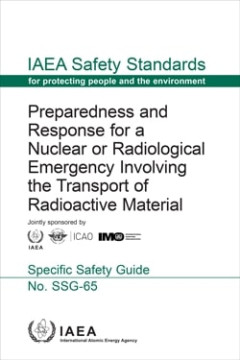
Preparedness and Response for a Nuclear or Radiological Emergency Involving t…
Radioactivity is a natural phenomenon and natural sources of radiation are features of the environment. Radiation and radioactive substances have many beneficial applications, ranging from power generation to uses in medicine, industry and agriculture. The radiation risks to workers and the public and to the environment that may arise from these applications have to be assessed and, if necessar…
- Edisi
- -
- ISBN/ISSN
- 978–92–0–127621–6
- Deskripsi Fisik
- 91 p
- Judul Seri
- IAEA safety standards series
- No. Panggil
- 614.876 IAE p
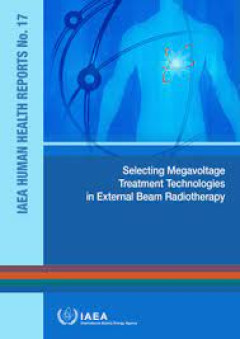
Selecting Megavoltage Treatment Technologies in External Beam Radiotherapy-IA…
Radiotherapy is one of the major treatment modalities for cancer, along with surgery and chemotherapy. It has been shown to be cost effective in many countries, including in low and middle income countries (LMICs) [1, 2]. Depending on the predominance of specific cancers in the geographic region in question, approximately 40–60% of all cancer patients can benefit from radiotherapy [3–6]. …
- Edisi
- -
- ISBN/ISSN
- 978–92–0–116921–1
- Deskripsi Fisik
- 58 p
- Judul Seri
- IAEA human health reports
- No. Panggil
- 615.849 IAE s
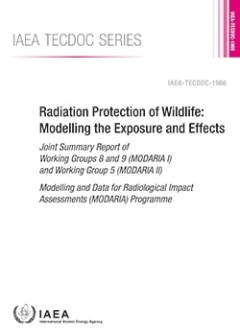
Radiation Protection of Wildlife: Modelling the Exposure and Effects, IAEA TE…
In recent years there has been a rapid development in models and approaches to assess whether the environment (or wildlife) is protected from releases of radioactive material. Through the Environmental Modelling for Radiation Safety (EMRAS and EMRAS II) and Modelling and Data for Radiological Impact Assessments (MODARIA I and MODARIA II) programmes, the IAEA has facilitated knowledge sharing on…
- Edisi
- -
- ISBN/ISSN
- 978-92-0-138021-0
- Deskripsi Fisik
- 89 p
- Judul Seri
- IAEA TECDOC series
- No. Panggil
- 614.715 IAE r
 Karya Umum
Karya Umum  Filsafat
Filsafat  Agama
Agama  Ilmu-ilmu Sosial
Ilmu-ilmu Sosial  Bahasa
Bahasa  Ilmu-ilmu Murni
Ilmu-ilmu Murni  Ilmu-ilmu Terapan
Ilmu-ilmu Terapan  Kesenian, Hiburan, dan Olahraga
Kesenian, Hiburan, dan Olahraga  Kesusastraan
Kesusastraan  Geografi dan Sejarah
Geografi dan Sejarah